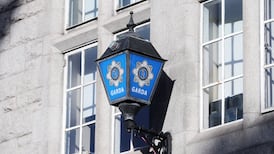The biggest challenge with a campaign like this, which lasted six weeks, is how to ensure constant coverage. Basically, in media terms, you're flogging a dead horse each day.
The media is looking for something they deem to be newsworthy; it's not enough that people are being tortured and killed, there has to be something new going on. So each day we had to find ways of putting a new spin on the same thing - that we needed one million Irish signatures.
There was an initial period of intensive research into how best to draw up the campaign. It was divided into two different sections, distribution and media. Four-and-a-half million cards were printed up to be distributed to seven different outlets, including churches and retail outlets. The media side of things centred on getting the most possible coverage for the least possible amount of money. We decided to have "the mother of all launches" to kick off the campaign! We toyed with various ideas, but short of having someone hanging off the top of Liberty Hall signing their name in the Liffey in red, we were hard pushed to come up with an idea which would guarantee media coverage.
In the end, we really just had a stroke of luck when U2 agreed to come on board in support of the campaign. They came out into the streets of Dublin with us for the launch. That was the story for the press, but from our point of view it meant we would get coverage.
The next difficulty was how to keep the campaign in the public eye. This meant organising a series of events which would prove to be so interesting the media would by dying to cover them. The day after the launch we had the whole Cabinet sign cards - and absolutely no one covered it! Later in the campaign the bishops all signed, which did get some coverage. But mainly we focused on getting local media coverage and targeting specialist programmes or pages in various papers. We also used the Internet. We were approached by Irish Internet site Paddynet; they created a link to the Amnesty International home page offering something a bit exciting for Net surfers. They set up a live website using videos of Irish comedians involved in Amnesty fundraising events. They had a space on the site for people to sign by typing in their name, which they could then email to Amnesty. We collected about 10,000 electronic signatures between this and the Amnesty page.
The next big thing was the launch of the road show. We had a 60-foot Cronin Mover which headed off from the Mansion House to hit all the major urban centres. It was followed by Today FM, which gave daily reports on what was happening. Organising this event was logistical hell. Things had to be set up from the office in Dublin, in conjunction with local gardai. The back of the lorry was turned into a stage and we had all sorts of entertainment provided. It worked really well - local celebrities turned up and helped create a buzz along the way. We got great coverage that week, which was very important because we were coming to the end of the campaign and we needed to get those signatures.
From my point of view, working on something like this is wonderful. You get to see something tangible at the end of the campaign and it feels like you're doing something worthwhile. The worst part is not knowing if it's going to work. It only works if you get media coverage, and there's no knowing whether that will happen. No matter how brilliant the event, you don't know if the media will come, and even if they do, you still have no guarantee you've got coverage. You know nothing until you turn on the radio or open the newspapers. And if it isn't covered, the event didn't work. I've had a pain in my stomach for the last six weeks!
In an interview with Jackie Bourke
Websites: www.paddynet.com/amnesty www.amnesty.ie









